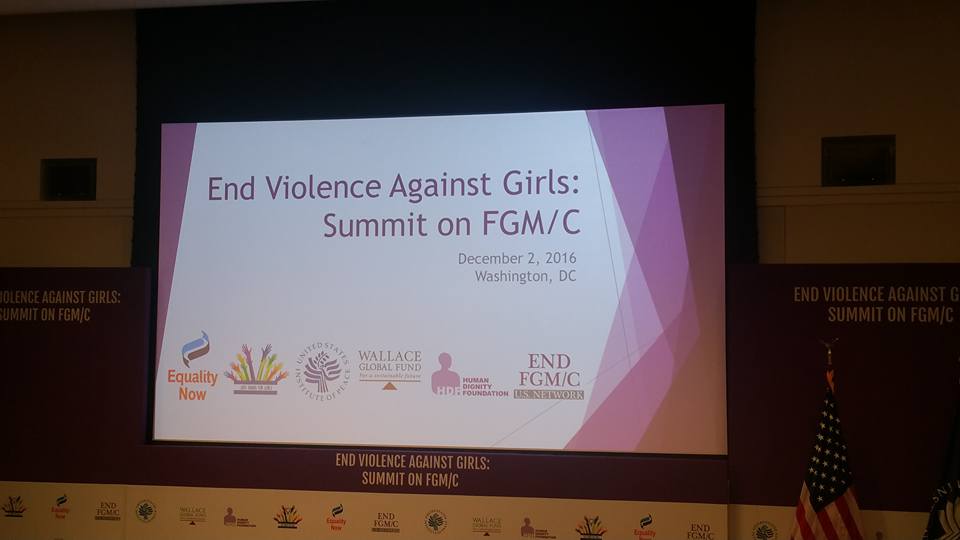Multiple events on female genital cutting hosted at Women Deliver in Vancouver
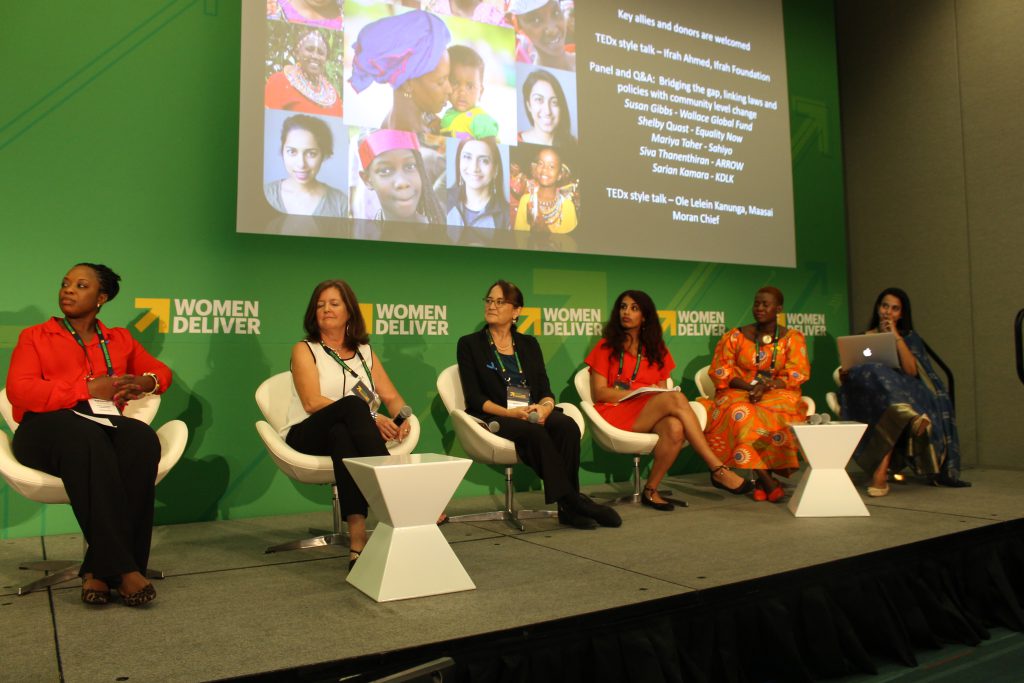
From June 2 to June 6th, Sahiyo co-founder, Mariya Taher took part in Women Deliver 2019 held in Vancouver, Canada this year. Over 8,000 participants took part in the conference and for the first time ever, a pre-conference on Female Genital Cutting was held on June 2nd, a day before the official start of the Women Deliver Conference. The preconference, “Uniting Forces to Ensure Female Genital Mutilation/Cutting (FGM/C) is a Practice of the Past” was an unprecedented event from civil society for civil society to unite voices and come together around a global Call to Action to end FGM/C and support FGM/C survivors. The event convened civil society organizations, champions, survivors and other grassroots representatives from across the globe to come together as a sector, to get to know others working globally across this issue, and to discuss what is needed to accelerate ending FGM/C by 2030. A global call to action was created out of the preconference by the participants in attendance, which was referenced throughout the entire duration of the conference and the various side-events on FGM/C held from June 3rd to June 6th. Other side events in which Sahiyo took part in as a panelist or speaker included: A screening of ‘In The Name of Your Daughter’ with a panel discussion afterwards entitled ‘FGM and the West — Is it our issue too?’ ‘It takes a whole community: Ending female genital cutting within a generation’ – hosted by Orchid project, this event was a highly participatory, activist-led, interactive workshop on community-based approaches to ending female genital cutting (FGC) within a generation. Featuring grassroots and civil society activists from East and West Africa, Asia, and North America, this session shined a light on effective community-led strategies to shift social norms and end FGC. ‘Ending FGM by 2030: It’s a global issue’ hosted by Equality Now. With a little over a decade before the 2030 target to end FGC, this interactive panel session and audience Q&A explored two vital challenges/themes/hurdles our international community must address to achieve to protect every woman and girl from FGC: 1) How do we measure, invest and support each of the 193 countries who have committed to end FGM, including especially in Asia Pacific, the Middle-East, the Americas, Europe and Eurasia? 2) How can activists, CSOs, intergovernmental bodies, and funders move forward as one to hold States, International and regional bodies and donors to account to end FGM globally by 2030? To learn more about Women Deliver and impact of the Preconference and side-events, check out related media coverage: World leaders urged to make female circumcision a priority like HIV Activist push for end to female genital mutilation and call for Asia Network Sierra Leone’s first lady confronted over FGM controversy Further Sahiyo Blog Posts on Women Deliver: Joint Press Release: ENDING FGM/C BY 2030: Uniting forces to make FGM/C a practice of the past Global Call to Action From “Uniting forces to make female genital mutilation/cutting a practice of the past: A gathering for global civil society actors”
Female Genital Cutting is an International Issue
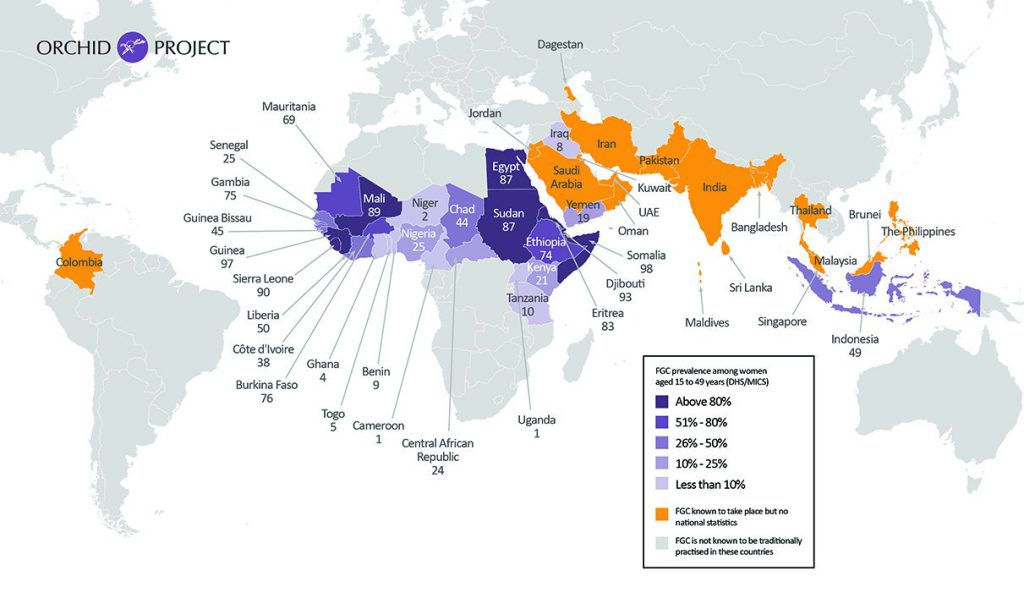
By Brionna Wiggins Upon hearing about female genital cutting and what it entails, it seems that one of the first facts you hear about it has to do with its prevalence in Africa and the Middle East. While it is true that these continents have a high prevalence (which has been decreasing according to a recent study by BMJ Global Health), it may contribute to the misconception that these are the only places in the world where females undergo FGC. Unfortunately, this is not the case. This practice reaches Asia, Europe, North America, South America, and Australia. Its presence on multiple continents leads FGC to be an international issue that needs to end with the support of all the nations involved. Map Courtsey of Orchid Project As part of my senior project, I have been bestowed the opportunity to do volunteer work with Sahiyo. They work specifically with the Dawoodi Bohra community, whose members mainly reside in India, Pakistan, Yemen and East Africa. FGC is also prevalent in countries such as Malaysia and Indonesia. There have even been reports in Colombia, South America. This puts FGC on every continent in the world! As previously mentioned, FGC occurs among diaspora communities. When families from countries that practice FGC move into new areas, they inevitably bring along the instilled need to continue the social norm. This leads to FGC being present in ‘receiving countries’, which can include places bordering practicing countries. Despite the handful of receiving countries that ban and criminalize FGC, the practice is still inflicted on girls in an effort to maintain their cultural identity. However, diaspora community members may send their daughters to their home country for ‘vacation cutting’. FGC is not a practice that is restricted by borders. Decades ago, FGC was practiced in some of the same countries that worked to prevent it. In Victorian Era England, FGC ushered its way into the medical field as a cure for nervous diseases, masturbation, and any other infliction that doctors/surgeons related to the female organs. Gynecological surgeon Isaac Baker Brown popularized the idea of using clitoridectomy, or removal of the clitoris, as a solution for ailments in medical circles. After some time, Isaac Brown and those who followed this method were eventually condemned. Yet, it was not so readily removed from American medical textbooks. Doctors in the U.S. also continued with this treatment to cure female ailments and the last documentation of this practice dates as far back as 1947. It is the year Renee Bergstrom received a clitoridectomy at the age of three in “white, midwest America” (The Guardian). People with good intentions may harm others irreparably, even the ones who trust them the most. While the practitioners may mean well, it still doesn’t excuse the continual physical and psychological harm of women and young girls. These mistakes have been made before, and are still being made by participating societies and people who perpetuate the practice. With FGC being so close to home, the problem cannot be ignored any longer as someone else’s problem. This practice affects women and girls on every continent. It must be dealt with using the full support of every global citizen to end the practice of FGC for the sake of women and men. You can help advocate against it too. Research is crucial in understanding a multifaceted issue such as this to ensure and reaffirm what you’re advocating for. That’s when you can volunteer your time or voice to organizations working to end FGC and keep up to date on the topic. Also, you can inquire about the laws in your state if they regulate or have anything in place pertaining to the practice. If there’s not a law already, then you can advocate for one being created. More on Brionna: Brionna is currently a high school senior in the District of Columbia. She likes drawing, helping others, and being able to contribute to great causes.
Global Women P.E.A.C.E Foundation 5K Walk Against FGM
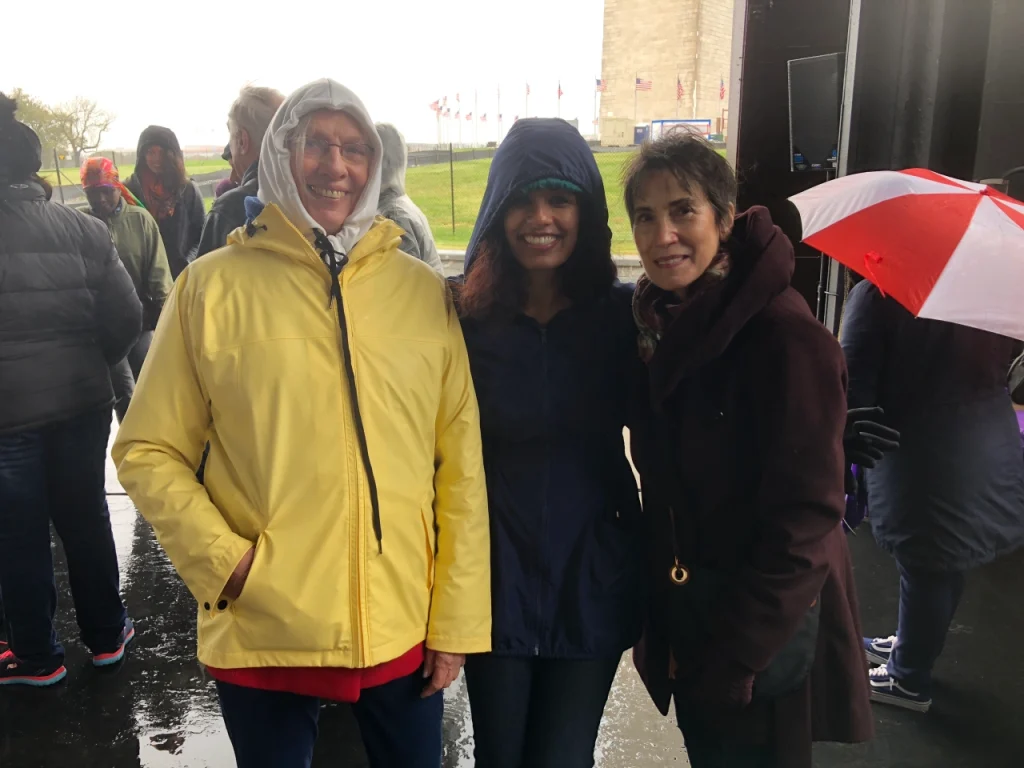
Each year, the Global Women P.E.A.C.E. Foundation hosts a 5K Walk Against FGM in Washington, D.C., and activists working to end FGC around the world come to participate. This year, the event was extended to 2-days and commenced with a Global Woman Awards ceremony on Friday, Oct 26th at the Milken Institute of George Washington University. Two of the award recipients, included Maria Akhter and Severina Sangurikuri, two women who took part in the U.S. Sahiyo Stories project. They each received a Global Woman Awards from the Global Woman Peace Foundation in the categories of Student Ambassador and Survivor Activist respectively. Here’s what Maria has to say about receiving her award: [blockquote/]I am thrilled, honored and humbled to receive the Global Woman Award in the Student Ambassador category from the Global Woman Peace Foundation. With boundless support from friends, family, and the hardworking activists in Sahiyo and other organizations working to end FGM/C, I’ve been able to turn my quiet interest in activism into a bold passion and lifelong commitment to a cause I hold near and dear to my heart. Receiving this award reinforces and challenges me to continue working in new ways to break the silence around FGM/C and end the practice for future generations.[/blockquote] The 5K Walk, scheduled for October 27th was at the last minute cancelled due to severe winds and rains. Yet, prior to the walk, people still gathered to listen to the guest speakers such as FGC survivor, Lola Oje from Nigeria who shared that she refuses to allow her beautiful daughter to be subjected to FGC. To learn more about the event, visit ‘A Mini United Nations Convenes in Washington, D.C.’
Female Genital Cutting charges dismissed but our work continues: Global reactions to Michigan case news
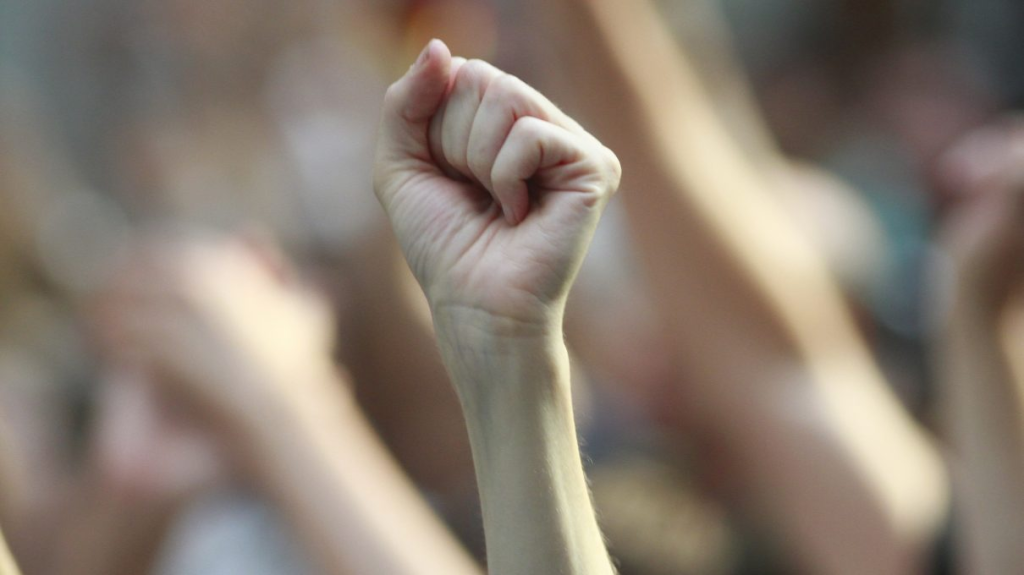
By Sahiyo On November 20, U.S. District Judge Bernard Friedman dismissed the female genital cutting charges in the historic Michigan case involving girls from the Dawoodi Bohra sect, emphasizing that FGC should be regulated by states as a “local criminal activity.” Congress enacted the 22-year-old federal law banning FGC in 1996 — the law Judge Friedman has declared unconstitutional. Charges were dropped against two Michigan doctors, Dr. Jumana Nagarwala and Dr. Fakhuruddin Attar, and six others accused of subjecting at least nine minor girls to FGC. However, Dr. Nagarwala, Dr. Attar and his wife, Farida, and a mother remain charged with conspiracy to obstruct an official proceeding. Dr. Nagarwala is also charged with conspiracy to travel with intent to engage in illicit sexual conduct. In light of these developments, we would like to share the responses of many Bohras and other activists working to end FGC. “What is so disappointing to me is that justice will be delayed in this case. There is a growing, global movement against khafz/FGC and we need positive judgments to send a strong message to our community that this practice is harmful and illegal. We must protect future generations of Bohra girls.”~ Farzana Doctor, Canada “By declaring the federal ban on FGM/C unconstitutional, Judge Friedman opens the door for parents to do exactly what was done in this case — take their daughters from states that ban FGM/C to states that don’t so they can be cut.”~ Umme Kulsoom Arif, USA “The ruling on the jurisdiction of this case is giving some folks a perceived green light to proudly say that khatna/khafz/FGM/C is not illegal in the US after being afraid to say it out loud after Nagarwala was arrested. But people should understand that there are many state laws still in place (including in Michigan now) and the judge said that FGM/C is a ‘criminal activity’ so parents beware. This does not give you permission to cut your daughters. It will be a regrettable time in history if there is an uptick in the practice of FGM/C in the US because of this technicality in the jurisdiction of this case.”~ Zehra Patwa, United States “Shameful really! While 30 other countries have made FGM illegal, US, the supposed defender of human rights, has just shown the world what American justice is…women’s rights are not just not important for the federal court.”~ Saleha, Canada “Shocking judgment. But at the same time judgment gave us more spirit to work hard and achieve the desired goal to end FGC. To bring social change takes time but nothing is impossible. I’m sure through our collective efforts we will achieve our goal one day.”~ Chandni Shiyal, India “While on our climb towards the summit, we are going to face slips and stumbles but the climb must go on…..this judgement though disappointing is a mere stumble or slip….”~ Fakhera, India “This judgment is clearly based on a technicality of the federal versus the state jurisdiction. Irrespective, FGC still continues to be a violent act against 7-year old girls. Are we disappointed to hear this decision? Most certainly. However, it’s only a matter of time until people open their eyes and see the truth. Tradition without any logic can only hold its ground so long. Sati used to be tradition too, in this very land. Look where we are now.”~ Alifya Thingna, India “One of the most disheartening outcomes of this case is the lack of outrage among our elected officials. Two, recently elected, Muslim women representatives from Michigan and Minnesota (the two states involved) have failed to use their platforms to proactively address this issue. FGM is an issue that affects the safety of women and girls, and constituents in their communities. This decision (and the lack of public outrage) sends a signal to communities who practice FGM that there will be no accountability.”~ Maryum Saifee, United States “It’s a sad day for silent seven-year-old girls when there is no clear US law to protect what is truly theirs!”~ Rashida Rangwala, United States “I am so disheartened by this decision! It’s actually shocking. I thought at least USA law would give justice to innocent girls.”~ Alifya Sulemanji, United States “No little girl in this world should have to go through the trauma of female genital cutting. Cultures should not be empowered to take away the human rights of their members.”~ Renee Bergstrom, United States “I feel angry and deeply disappointed. This isn’t over but it’s incredibly discouraging to see our legal system disrespect and let down girls and women being violated in this country.”~ Lara Kingstone, United States “यह केस 23 US राज्यो में FGM कानून के अभाव में जीता गया है। यह एक ही टेक्निकल ग्राउंड है। अब यह केस अमेरिकन सुप्रीम कोर्ट में जाएगा। UN कानून के तहत अमेरिका बाध्य है। अब वहां सुप्रीम के आदेश पर फेडरल कानून बन सकता है। कोई भी संघर्स लंबा समय मांगता है कभी जीत कभी हार होती है। हरेक निष्फलता अगली सफलता का बेज़ (फाउंडेशन) बनता है। भारत के कोई राज्य में ऐसा FGM कानून नही है। मगर हम भी UN के सदश्य है। भारत मे भी ऐसा कानून आज नही तो कल बनेगा।”~ Ibrahim Patel, India “There are many practices which have been blindly followed from decades. Some of them have been changed, modified or amended in the course of time, with the advancement of research and scientific development. We are just trying to tell the world the actual fact that women undergo suffering with no fault of their own because of FGC.”~ Insiya Ganjifrockwala, India “Regardless of the impending appeal, this decision may inevitably embolden many to continue cutting girls. We should take this opportunity to continue to pressure our leaders to stand against FGC as a human rights violation, to bring awareness to the issue, and to protect our girls.”~ Jenny Cordle, United States “I would call this verdict as a legislative failure as no justice has been given to the child, and this gives a loophole
An appeal to Maneka Gandhi: Stop the flip-flops on Female Genital Cutting in India

Sahiyo is deeply concerned about the Indian government’s repeated contradictory positions on the problem of Female Genital Cutting (FGC) in the country. In the span of just 13 months, India’s Ministry for Women and Child Development has flip-flopped on its stand on FGC at least twice. Its latest u-turn came on Wednesday, June 27, when the Ministry mentioned, in the middle of a larger press release, that “Female Genital Mutilation” is “not practiced in India”. This is clearly at odds with the stand that the central government took in the Supreme Court just two months ago, when it stated that FGC is “already an offence” under Indian law and asked the Court for guidelines on how to tackle the challenge of FGC. This is not the first time that the government has made contradictory statements about FGC, which is called Khatna or Khafz by the Bohra community and female Sunnath by FGC-practicing communities in Kerala. Such flip-flops leave FGC survivors in the lurch, unsure of whether their government is likely to support the end of a practice that continues to harm so many women and girls in India. The first time Female Genital Cutting (also called Female Genital Mutilation) involves cutting parts of the female genitalia for non-medical, often religious or cultural reasons. In India, the kind of FGC practiced by the Bohras and some communities in Kerala typically involves cutting a part or all of a young girl’s clitoral hood. The practice can have a variety of physical, psychological and sexual consequences on the health of women and girls. Maneka Gandhi, the Minister for Women and Child Development, first publicly acknowledged the practice of FGC in India in May 2017, a month after an independent lawyer petitioned the Supreme Court asking for a ban on FGC. The Court sought a response from the government and Gandhi stated that the practice of FGC would be considered a criminal offence under provisions of the Indian Penal Code as well as the law against child sexual abuse. She also stated that her Ministry would write to the Syedna (the leader of the Dawoodi Bohra community) and ask him to “issue an edict to community members” to give up FGC voluntarily. If the community does not give up the practice, Gandhi said, the government would introduce a specific law against FGC. This was a welcome stand by the government, but it was contradicted seven months later. In December 2017, during a hearing of the petition against FGC, Gandhi’s ministry told the Supreme Court that “there is no official data or study” that supports the existence of FGC in India. While this is technically correct, it is dismissive of the many survivor testimonies that have been presented to the Ministry through petitions and personal meetings with survivors and activists. The statement is also ironic, because “official” data can only exist if the government actually commissions such research studies on FGC, which it has not yet done. After this frustrating statement, the government gave FGC survivors hope again in April. At another Supreme Court hearing, the government’s attorney unequivocally acknowledged the practice of FGC in India, described it as an offence under provisions of existing Indian laws, and asked the Court itself to help issue guidelines on how to end FGC in communities. Now, with it’s latest press release, the government is back to flip-flopping on the issue. The second time The Ministry’s June 27 press release was a refutation of a new poll by the Thomson Reuters Foundation, which found India to be “the world’s most dangerous country for women”, based on a perception survey of 548 experts on women’s issues from around the world. The survey results identified a list of 10 countries that are currently perceived to be the most dangerous for women. The poll evaluated each country on six key parameters: health, discrimination, cultural & religion, sexual violence, non-sexual violence and human trafficking. India was ranked number one (most dangerous) one three of these parameters: sexual violence, human trafficking and culture & religion. It also ranked as most dangerous overall, followed by Afghanistan, Syria, Somalia, Saudi Arabia and others. It is the parameter of “culture and religion” that specifically concerns us here. This parameter includes practices such as child marriage, forced marriage, female foeticide, punishment through stoning or mutilation as well as Female Genital Mutilation/Cutting. The Indian Ministry for Women and Child Development did not take kindly to the Thomson Reuters poll, and issued a defensive press release dismissing the poll as unscientific and not based on data. It is no secret that women’s rights and freedoms are regularly trampled upon in India, and the Ministry’s sour-grapes reaction to the perception poll has already been critiqued in the media. What struck Sahiyo’s attention is this particular statement in the Ministry’s press release: “The six questions posed as part of the poll cannot fairly be applied to all countries. E.g. the age bar for defining child marriage is different in every country, mutilation as a means of punishment, female genital mutilation, stoning etc. are not practiced in India.” [Italics added] To claim that Female Genital Cutting is not practiced in India is a blatant falsehood, and it comes from a government that has already publicly acknowledged the prevalence of FGC in India twice before. It comes from a government whose ministry has personally met with survivors and activists in the past year and assured them that it is keen to end this practice. It comes from a government whose minister has claimed she would appeal to the Bohra Syedna to end the practice of FGC in the Bohra community. It comes from a government that has officially told the highest Court of this country that FGC is already a crime in India, under the Indian Penal Code and the Protection of Children from Sexual Offences Act. It comes from a government that must surely be aware that FGC is practiced not just by Bohras but also by other groups
Sahiyo’s petition to the United Nations needs your help
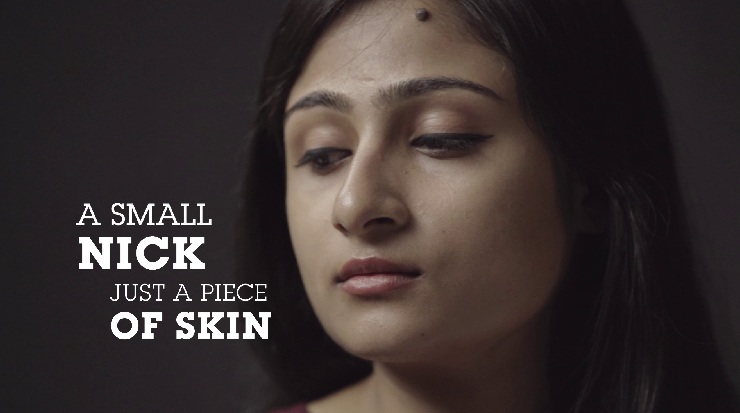
In December 2016, Sahiyo started a petition with Change.org to encourage the United Nations to invest in research on Female Genital Mutilation/Cutting in Asian countries. The petition proposes to end FGM/C worldwide by 2030, and Sahiyo needs the support of 7,500 petition signers to accomplish our goal. The United Nations reports that at least 200 million women have undergone FGM/C, but their data is mostly restricted to countries in sub-Saharan Africa. FGM/C is reported in many Asian, European, and Middle Eastern nations; however, there is a considerable lack of data from these countries, which means the global scope of the problem of FGM/C remains unknown. In the past year, cases of FGM/C in Sri Lanka, India, and other Asian countries have come into the light of the media and attracted the attention of government officials. The Indian Government’s Ministry of Women and Child Development told the Indian Supreme Court that there was no official data to support the prevalence of FGM/C in India. This ruling was a massive disappointment to activists and researchers who are working to bring more research and awareness to the prevalence of FGM/C in India and Asia. Asian countries have been excluded from the UNFPA-UNICEF Joint Programme to Accelerate the Abandonment of FGM/C. With more support for research initiatives, Asian countries can conduct research, bring further awareness to the issues within their countries as well as in the global context, and propose legislative change with qualitative backing. We need about 2,000 more signers to reach our petition goal. Click this link to help us advance our mission to eradicate FGM/C in Asia and worldwide! Help us spread the word by sharing our petition within your networks.
White House Press Release Falsely links Gender Violence (and FGC) to Foreign Nationals
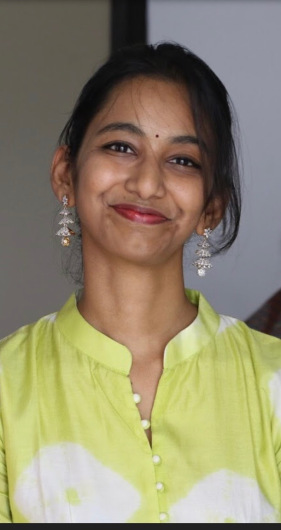
By Geethika Kodukula (Disclaimer: Although they graciously accepted it, the views in this post are my own and do not necessarily reflect those of Sahiyo or its founders. I am not myself an immigrant, Muslim, or an FGC survivor.) In January, the White House put out a press release wherein they mentioned a Department of Justice report about the Entry of Foreign-Born Terrorists into the United States and the “connection” to Gender-Based Violence. The press release noted more than 20 “statistics” and names of people who have either been convicted of terrorist activities or conspiring against the US between 2001 and 2016. All of the cited examples were of people keeping Islamic faith, children of visa lottery recipients, or children of foreign-born nationals. Nowhere in this press release is there mention of the multitude of hate-crimes against people of color in 2017 or the half a dozen shootings in the month of January that are more pressing and real concerns for national security. As a statistician, I can tell you with certainty that numbers do not mean anything if you do not have a baseline to compare against. For example: let’s examine statistics about crime from the FBI. In 2016, there were 6,121 hate crimes in the United States. However, before believing that we must leave the country because it is unsafe, it is important to note that only 11.6% of the total number of jurisdictions monitoring hate crimes reported any incident. In other words, 88.4% of jurisdictions had no incident report of a hate crime whatsoever. Cherry picking numbers and placing them onto an entire group does not make the statistical interpretation valid. According to the White House Press Release, two ‘threats’ immigrants bring into America are gender-violence and crime. Let me rephrase that – the current administration, led by this man, who hired people like Rob Porter and David Sorensen who touted their professional prowesses in response to them giving their wives black-eyes, is worried about immigrants bringing gender violence into the country. Gender Violence is pervasive across the world. “Global estimates by the World Health Organization indicate that about 1 in 3 women worldwide has experienced violence in their lifetime.” [WHO | Violence against women] Factually, there is no continent on which there hasn’t been some form of sexual harassment or assault, including Antarctica. If you want some stats on the issue, go to UNWomen. I could (and desperately want to) pick apart each of the statistics provided in the White House statement intended to make us clutch our pearls and shriek at the sight of a ‘foreign-national’. However, I will resist the urge and stick to the point that made me decide to write this piece. From the White House statement: “According to a 2016 report by the Center for Disease Control and Prevention (CDC), the number of women and girls at risk of undergoing female genital mutilation (FGM) was three times higher in 2012 compared to 1990. The CDC report states that the increase was entirely a result of the rapid growth in the number of immigrants from FGM practicing countries.” One concern/question that immediately comes to mind: what was their methodology to predict that increase? Let’s check the report: “For comparability of terminology with earlier analyses, those at risk consisted of the number who potentially underwent or would potentially undergo FGM/C in the future if the population of foreign-born women and girls and their children in the United States had the same rates of FGM/C as the countries in which the girls or their mothers had been born.” To put it in perspective, the statement assumes that if a country has, say, 20% prevalence of FGC, and we have 100 immigrants from that country, 20 of those immigrants are at risk for FGC/M. The inference is then that after people emigrate to the United States, they behave in the same manner as they would in the country from which they migrated. The study does not take into account assimilation of immigrants, a difference in socioeconomic status, nor that FGM/C is banned in the United States. The CDC study itself notes that ‘These differences would very likely result in reduced risk for FGM/C’. Whoever wrote this press statement did not read the entire CDC study, or they just choose to conveniently leave out that point. Alternatively, they must have thought that no one would read the actual CDC study in its entirety and instead the public would align with the narrative that we must all run from the scary foreign-man? FGC is a real public health problem prevalent around the world, including in the United States. We are all trying to understand, reason, and reduce its incidence. We would be rejoicing if as a shift from the norm, the statement had said, ‘We can not tolerate this practice anywhere; here on U.S. soil, or across the world. We will work towards grassroots education, de-stigmatizing, and progress in the elimination of FGC.’ The White House Press Release leaves me to wonder, is the U.S. still a champion of human rights across the world, or, are they okay as long as any violation that occurs is just not in their backyard? FGC has its origins rooted in the patriarchy and suppression of female sexuality. Expecting the Trump administration to understand the nuanced situation of harmful religious practices is almost pointless. It is a war and not a battle. However, I will be damned if I stand by and watch these false “champions of women’s safety and health” demonize people without caring about the implications of their statements. At this point, if a ‘foreign national’ pulls his ear three times before eating his lunch, it seems the White House will find a reason to make it an issue relating to economic/health/crime/gender-violence. The gender-violence statistics in the United States are staggering. For many of us, it is our day job to end it – day-in and day-out. Gender-violence, like many forms of violence, is about power. Don’t let
Building the data on Female Genital Cutting in the Bohra Community
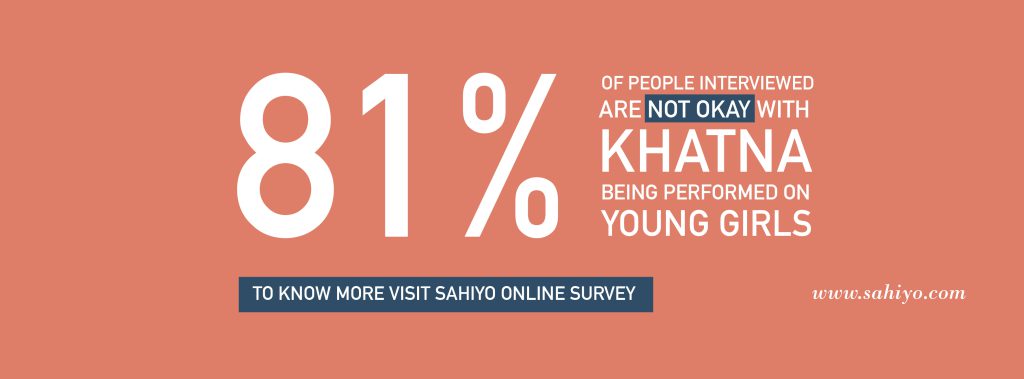
In February 2017, Sahiyo released the findings of the first ever large scale global study on Female Genital Cutting in the Bohra community in order to gain insight into how and why this harmful practice continued. A year later, this February 2018 saw the release of a second large-scale research study entitled “The Clitoral Hood – A Contested Site”, conducted by Lakshmi Anantnarayan, Shabana Diler and Natasha Menon in collaboration with WeSpeakOut and Nari Samata Manch. The study explored the practice of FGM/C in the Bohra community specifically in India and added findings about the sexual impact of FGC on Bohra women. Substantial overlap between the two studies can be found and parallels can be drawn. Firstly, both studies explored the type of FGM/C that was carried out on the participants. The study by Sahiyo discovered that out of the 109 participants who were aware of the procedure that was carried out on them, 23 reported having undergone Type 1a – the removal of the clitoral hood. Research carried out by Anantnarayan et. al. found that although proponents of FGM/C in India claim that Bohras only practice Type 1a and Type 4 FGM/C (pricking, piercing or cauterization of the clitoral hood), participants reported that both Types 1a and 1b (partial or total removal of the clitoris and/or clitoral hood) are most often practiced. Sahiyo and Anantnarayan et. al. both found that the majority of participants had undergone FGM/C and therefore, among both samples, FGM/C was widely practiced. Sahiyo found that 80% of 385 female participants had undergone the practice, whereas Anantnarayan et. al. found that of the 83 female participants in the study, 75% reported that their daughters had undergone FGC. Both studies found that FGM/C was performed at around the age of seven. The impact of FGM/C on participants was also reported to be similar among participants of both studies. In exploring this further, Anantnarayan et. al. found that 97% of participants remembered FGM/C as a painful experience. Participants who had undergone the practice reported painful urination, physical discomfort, difficulty walking, and bleeding to be the immediate effects after having undergone FGM/C. In the long-term, some women reported that they suffered from recurring Urinary Tract Infections (UTIs) and incontinence, which they suspect could be linked to their khatna. Both studies also explored the effect of FGM/C on participants’ sex lives. Anantnarayan et. al. found that approximately 33% of participants believe that FGM/C has negatively impacted their sex life. Similarly, Sahiyo reported findings of 35% of participants who believed that FGM/C has negatively impacted their sex lives. Some of the problems identified by several participants included low sex drive, the inability to feel sexual pleasure, difficulty trusting sexual partners, and over-sensitivity in the clitoral area. Physical consequences of FGM/C in both studies also revealed psychological consequences. Similar to Sahiyo’s findings, Anantnarayan et. al. found that many participants reported feelings of fear, anxiety, shame, anger, depression, low self-esteem, and difficulty trusting people as some of the psychological repercussions of their FGM/C experience. Sahiyo found that 48% of participants in their study reported that FGM/C had left them with a lasting psychological impact. Both Sahiyo and Anantnarayan et. al. also explored the main reasons for the the continuation of FGM/C within the Bohra community. Several common reasons were found, including the continuation of an old traditional practice, the adherence to religious edicts, and to control women’s promiscuity and sexual behaviour. Interestingly, Sahiyo’s study found that 80% of women had earned at least a Bachelor’s degree, no relationship could be determined between education level and having undergone FGC. Meanwhile, the study by Anantnarayan et. al found that a strong connection existed between a mother’s education level and her decision to continue FGC on her daughter. Sahiyo’s study, however, did note that more important than education level was the question of a person’s ideological preference (stated religion) as it might influence a person’s decision to continue FGC on their daughter. In fact, Sahiyo’s survey found that those who were most likely to continue ‘khatna’ were also more likely to still identify as Dawoodi Bohra in their adult life. Anantnarayan et. al also determined that the more diverse personal networks and economic independence from the Bohra religious community a woman had, the more likely they were to discontinue FGM/C and renounce it. Finally, both studies examined the relationship between men and the decision/involvement for a girl to undergo FGC. Both studies did allude to the idea that the decision leading to a girl undergoing FGM/C may not strictly be confined to women. Sahiyo’s study revealed that 72% of respondents believed that men were aware of the practice, but only 27% believed that men were told of the practice when the girl underwent it in their family. Anantnarayan et. al. concluded that men played an integral role in the maintenance and propagation of the practice, both at the personal and political level, whether passively or more actively. However, Sahiyo’s data collection was completed in 2016, prior to the large-scale movement to end FGC in the Bohra community. The last few years have shown that with an increase in awareness of FGC amongst the public, Bohra men’s own knowledge of FGC has also naturally increased, and thus the traditional idea that men are unaware of FGC may in fact be changing with the current generation, as pointed out by Anantnarayan et. al.
Sahiyo to be a part of a new global movement for progressive Muslims

Sahiyo participates in the End Violence Against Girls Summit on FGM/C
